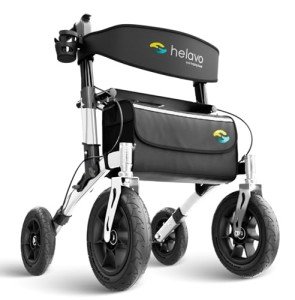Understanding Mobility Assistance: A Comprehensive Guide
In a significantly active world, mobility assistance has actually become crucial for many individuals. Whether due to age, injury, or persistent illness, mobility obstacles can considerably impact life. This article looks into the various forms of mobility assistance, their advantages, and practical factors to consider for those seeking help.
What is Mobility Assistance?
Mobility assistance encompasses a variety of services, devices, and adjustments designed to help people move safely and successfully. It intends to boost self-reliance for those with problems in movement, allowing them to carry out day-to-day activities and engage with their environments.
Types of Mobility Assistance Devices
Mobility assistance devices can differ widely, from easy to intricate aids. The following table details some typical types of mobility assistance devices, their descriptions, and ideal uses:
| Type of Device | Description | Ideal For |
|---|---|---|
| Wheelchairs | Wheeled mobility gadgets for individuals with minimal walking ability. | Permanent or temporary mobility requirements. |
| Walkers | Frames with four legs, providing support while walking. | Individuals requiring a stable aid. |
| Canes | Lightweight sticks providing support; includes standard and quad walking sticks. | Those with moderate mobility problems. |
| Crutches | Gadgets developed to transfer weight off the legs. | Post-surgery recovery or injuries. |
| Mobility Scooters | Motorized cars providing transport over brief ranges. | Those with mobility problems. |
| Stairlifts | Motorized chairs that go up and down stairs. | Multilevel homes with stair availability problems. |
| Home Modifications | Structural modifications, such as ramps or broader entrances. | Enhancing home accessibility for wheelchairs or walkers. |
| Transfer Aids | Devices like moving boards or lift systems for much easier transfers. | Assistance in moving to and from chairs or beds. |
Advantages of Mobility Assistance
The value of mobility assistance extends beyond physical movement. Here are several essential advantages:
- Enhanced Independence: Mobility gadgets empower users to perform day-to-day tasks independently, fostering self-sufficiency.
- Improved Quality of Life: By allowing higher participation in social activities, mobility assistance adds to emotional well-being and social integration.
- Safety and Support: Devices like walkers and canes supply physical support, decreasing the risk of falls and injuries.
- Access to Healthcare: Mobility assistance can streamline transportation to medical visits, ensuring users receive vital care.
- Modification Options: Many mobility gadgets can be customized to match specific needs and preferences, making sure convenience and functionality.
Common Mobility Assistance Challenges
While mobility assistance can pave the way for greater independence and enhanced quality of life, numerous challenges might arise. A few of the common problems include:
- Cost: Mobility devices can be expensive, and insurance protection may differ substantially.
- Training and Familiarization: Learning to use brand-new devices correctly might need time and assistance.
- Ease of access Issues: Not all environments are geared up to accommodate mobility devices, resulting in prospective barriers.
- Stigma: Social stigma around using mobility help can affect self-esteem for some people.
Providing and Receiving Mobility Assistance
To ensure the most reliable assistance, it is essential for both providers and receivers of mobility aid to think about a number of factors:
- Assessment of Needs: A thorough assessment by a healthcare expert can identify the particular type of assistance needed.
- Trial Period: Trying out gadgets can assist people discover the one most fit to their way of life and preferences.
- Regular Maintenance: Maintenance of mobility devices guarantees resilience and safety.
- Education: Providing training on the appropriate usage of mobility help is necessary for making the most of benefits.
Mobility Assistance FAQs
Q1: What types of mobility aids are offered?A: Common mobility aids consist of wheelchairs, walkers, canes, crutches, and scooters, among others. Each device is developed to satisfy specific requirements and choices.
Q2: Where can I acquire mobility assistance gadgets?A: Mobility devices can be acquired from medical supply stores, online retailers, or through doctor recommendations.
Q3: Will my insurance cover mobility assistance devices?A: Many insurance plans provide partial coverage for mobility help, however protection can vary based upon the policy. It's a good idea to contact the insurance coverage company for particular details.
Q4: How can I adjust my home for mobility assistance?A: Home adjustments like ramp setup, wider doorframes, and grab bars in bathrooms can greatly boost availability. Consulting with an occupational therapist can provide tailored services.
Q5: How do I choose the ideal mobility aid for me or an enjoyed one?A: Assess the individual's mobility requirements, weight capability, and way of life. Trying various gadgets can also assist in selecting the one that feels most comfortable and practical.
Mobility assistance plays an essential role in improving the independence, safety, and lifestyle for people facing mobility difficulties. From easy walking sticks to intricate mobility scooters and home modifications, a variety of choices exist to satisfy special needs. As find more info continues to recognize the value of accessibility, the integration of mobility assistance services into every day life will improve, guaranteeing that everybody has the opportunity to lead a fulfilling and active lifestyle.
By understanding the readily available options and advantages, individuals and their families can make informed decisions that support their mobility needs.

